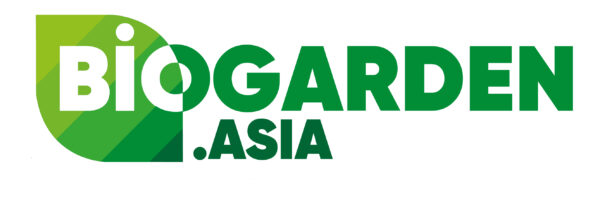No products in the cart.
NEWS
Introduction to Soils: Managing Soils
The goal of good soil management is to meet essential plant needs. Healthy plants need water, nutrients, oxygen, and a physical medium that allows seeds to germinate, shoots to emerge and grow up toward the sunlight, and roots to anchor the plant by growing strong and deep. In a previous article, Introduction to Soils: Soil Quality, we introduce a number of concepts that relate to soil quality or soil health. These include soil texture, soil fertility, soil structure, organic matter, and soil conservation. This article provides information on how different soil management practices affect soil quality and crop production.
In the process of growing crops on farms, we use a number of farming practices to manage soil in the field. These include tilling, cultivating, adding fertilizers and lime, growing cover crops, applying compost or manure, rotating crops, and other practices. Many years of agricultural research have shown us that how and when we use these practices makes a big difference to the quality of our soils. When we use these practices correctly, we can improve soil fertility, soil physical structure, and biological activity, and also protect soils from erosion. Soils that are properly managed for soil quality produce healthier, higher-yielding crops.
Managing soil organic matter is extremely important because organic matter plays a role in almost all aspects of soil quality. Soil organic matter is composed of plant and animal residues, and substances produced by decomposition. Most agricultural soils contain only a small proportion of organic matter, usually less than 5%, but even that small amount strongly influences the vital functions of soil. Soil organic matter releases plant nutrients as it decomposes, thus improving soil fertility. Soil organic matter improves the structure of soils by improving water holding capacity, promoting the aggregation of soil particles, and helping to keep the soil aerated so roots can grow easily. Organic matter feeds the microorganisms and other living organisms in the soil, promoting biological activity and helping to fight pests. Practices such as using cover crops, applying manure and compost, rotating crops, and controlling erosion for soil conservation, can maintain or increase soil organic matter. Other practices, especially plowing, tilling and cultivating, can decrease the amount of organic matter in the soil.
Soil management practices are used to improve crop production, but each can affect soil quality, as well. In this section we will examine common soil management practices and how they can improve or degrade soil fertility, soil structure, soil biological activity, and soil conservation. It is also useful to think about how each of these practices affects soil organic matter.
Soil testing
The first step in managing soil fertility is testing the soil. A soil test provides very important information about nutrient levels in the soil, including phosphorus, potassium, calcium and magnesium as well as the pH (or acidity). You can also test for organic matter. Nitrogen, a very important nutrient and one that is frequently deficient, is not included directly in most soil tests. This is because nitrogen forms and amounts change in response to temperature, soil moisture, and biological activity, so a one-time test doesn’t provide very useful information.
 When collecting soil for soil testing, follow the instructions in the kit describing the number and depth of samples to take, and how to prepare the sample for shipment. Photo courtesy of Penn State Extension.
When collecting soil for soil testing, follow the instructions in the kit describing the number and depth of samples to take, and how to prepare the sample for shipment. Photo courtesy of Penn State Extension.
A basic soil test kit from the Agricultural Analytical Services Laboratory at Penn State University is available through county offices of Penn State Extension for a nominal fee. The kit contains instructions on how to collect and prepare a sample, a simple form to fill out, a plastic bag for the soil sample, and a package for mailing everything to the Penn State laboratory. About two weeks after mailing in your soil sample, you will receive a report.
How to read a Soil Test
Soil test reports show the levels of P, K, Mg, and pH in soil. Every soil test looks a little different, but in general there will be a graph that gives you a quick summary of how your soil is doing. If a Penn State soil test report shows bars that reach all the way across into “Exceeds Crop Needs” (vegetables) or “Above Optimum” (agronomic crops), the soil has more than enough nutrients so there will be no need to add more. If bars are in the below optimum zone, there are not enough nutrients to support the next crop. The report also provides recommendations for how much and what type of fertilizer and lime to add, if needed. Recommendations on nitrogen applications are made mostly on the basis of the crop being grown.
Soil test report
 According to the soil test report, this field has plenty of magnesium, calcium, potassium (potash) and phosphate to meet the needs of a sweet corn crop.
According to the soil test report, this field has plenty of magnesium, calcium, potassium (potash) and phosphate to meet the needs of a sweet corn crop.
Soil pH is also a very important aspect of soil fertility. pH is not a plant nutrient, but rather is a measure of the acidity of the soil. Most crops grow best when the soil pH falls between 6.2 and 6.8, because this is the range in which plant roots can best absorb nutrients (like nitrogen, calcium, potassium and others) from the soil. Soils in Pennsylvania tend toward being too acidic for producing most crops, so soil tests often recommend applying lime to correct low pH. Lime neutralizes acidity and the calcium and magnesium in lime are essential plant nutrients.
Adding fertilizers and lime
Plant nutrients are added to the soil in order to improve crop plant growth. Nutrients are typically added as fertilizers, but compost, manure, and cover crops are also sources of plant nutrients. There is a wide variety of commercial fertilizer products for farmers to choose from. These vary in formulation (granular or liquid), combination of nutrients, and amount of each nutrient. All fertilizer labels include the “grade” or “analysis” of that particular fertilizer. The fertilizer grade is the percentage of weight of the fertilizer that is composed of nitrogen, phosphate (phosphorus) and potash (potassium). For example, a fertilizer labeled “10-20-10” indicates 10% nitrogen, 20% phosphate, and 10% potash.
Fertilizers may be applied at different times and by different methods, depending on the needs of the crop. Fertilizers are sometimes applied by broadcasting them uniformly over a field, and other times they are applied in bands close to crop plant roots. Typically, phosphorus and potash fertilizers can be applied at their full recommended rate at the beginning of the growing season, while nitrogen is best applied in several, split applications, as the crop grows.
Similarly to fertilizers, different types of lime are available. Your soil test report will include recommendations on which type is best for your fields. Fall is an excellent time to apply lime for it to react with the soil and neutralize acidity before the next crop is grown.
Adding composts and manures
Adding compost and manure to soil can increase your organic matter content as well as add plant nutrients. Manure is a highly variable nutrient source. The amounts of nutrients in manure vary by the animal it came from, what the animal ate, how the manure has been stored, and how long it’s been stored. For example, poultry manure generally has more nitrogen than dairy manure and fresh manure has more nitrogen than stored manure. In general, composts are good sources of phosphorus and potassium, but they contain relatively little nitrogen.
Cover crops, crop rotation and other conservation practices
Rotating crops is one of the most important practices for keeping soils healthy and alive. If the same crop is grown over and over, pests and diseases can build up in the soil, and organic matter content can decline. Including perennials such as grass or clover in vegetable or field crop rotations is recommended.
 Including cover crops, like this sudangrass, into crop rotations adds organic matter to the soil, protects soil from erosion, and can be helpful in managing weeds. Photo courtesy of Penn State Extension.
Including cover crops, like this sudangrass, into crop rotations adds organic matter to the soil, protects soil from erosion, and can be helpful in managing weeds. Photo courtesy of Penn State Extension.
Cover crops provide a cover for the soil in fields between cropping seasons, but they are not harvested. They are grown to prevent soil erosion by wind or water, to add organic matter to the soil, to improve the soil structure and stimulate soil microorganisms. They are planted before and after the main designated cash crop in a rotation, and then tilled into the soil where they decompose into organic matter. Grass or grain crops are commonly used as cover crops; for example, rye, wheat, oats, barley, and perennial ryegrass. Grass or grain cover crops do not add additional nutrients to the soil, but they do scavenge and recycle nutrients that might otherwise wash out of the soil. Legume cover crops such as vetch, clover, and field peas have the ability to take nitrogen from the air and “fix” it into a form that plants can use. So legume cover crops can add additional nitrogen to the soil when they are tilled under.
 Cover crop residue can be incorporated into the soil using a variety of implements, such as this disk plus chisel plow combination. Chisel plowing also breaks up compacted soil layers and improves aeration. Photo courtesy of Penn State Extension.
Cover crop residue can be incorporated into the soil using a variety of implements, such as this disk plus chisel plow combination. Chisel plowing also breaks up compacted soil layers and improves aeration. Photo courtesy of Penn State Extension.
Tillage and Cultivation
In the process of growing crops in the field, we use different tools to till the soil in order to:
- Break up compaction and aerate the soil (plowing)
- Incorporate cover crops, compost, manure, lime and fertilizers (plowing and disking)
- Create seedbeds (disking)
- Kill weeds (cultivation)
- Break up soil surface crusts (cultivation)
Tillage can both help and harm soil quality, so it is important to consider carefully how and when you till. On one hand, proper tillage breaks up compaction, aerates the soil, and incorporates raw organic matter. However, too much or improper tillage reduces soil organic matter content and can destroy soil aggregates. It is very important to never till soil when it is wet. Driving on and working soil when it is wet will cause compaction, damage soil aggregates, and decrease aeration in the soil.
Managing soils for optimum crop growth and yield is one of the most important foundations for your farm’s profitability and sustainability. Understanding how each soil management practice affects soil quality in general, and soil organic matter in particular, will help you build healthy, high quality and productive soils.
Funded by USDA Specialty Crop Block Grant Project ME#44166076 – “Sustainable Production and Pest Management Innovations for Next Generation Young and Hispanic/Latino Specialty Crop Growers”



